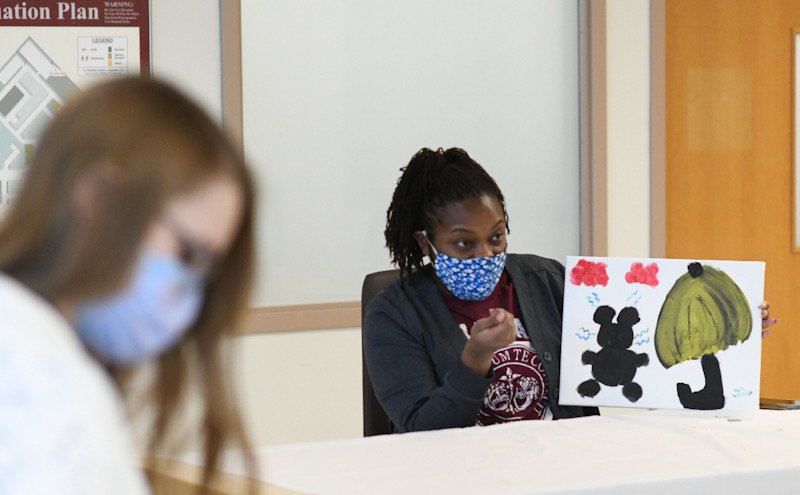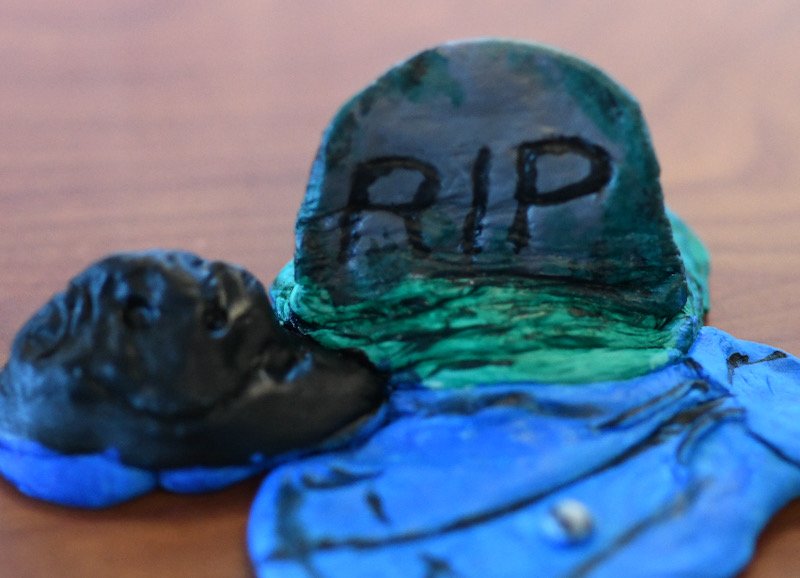In talk therapy, Army veteran Isabell Dorsett could describe feelings of fear, anxiety and depression. But no matter how many sessions she had with her Veterans Administration therapist, her feelings didn’t seem tangible.
Then three weeks ago Dorsett joined a new art therapy program at the Charlie Norwood VA Medical Center – Uptown Division. Her feelings came to life through paper and paint.
“I can see it now,” Dorsett said. “It’s a worry ghost. It kind of hides in the dark corners. Even if I can’t see it, it’s always there.”
[adrotate banner=”51″]
The art therapy courses are typically three weeks long and are run by Michalea Jones, who has a master’s degree in art therapy from St. Mary-of-the-Woods College in Indiana. The Charlie Norwood VA Medial Center got a one-year grant to run the program and classes began this January at the Uptown Division building at 1 Freedom Way, off Wrightsboro Road, near Augusta’s Daniel Field airport.
On Monday, Jones and her four students in attendance talked about anxiety, safe spaces and symbolic armor. Each student came up with visual ideas to represent issues they are dealing with.

Navy veteran Latoya Williams, 37, painted what looked like a scared Mickey Mouse under red thunderclouds. The character was protected by an umbrella, which Williams said represented her faith, family and self care.
Another Navy veteran, Jerome Proctor, 38, painted a castle with the outline of a looming dragon.
“It’s an outline because it’s not a real dragon. It’s an outline of a dragon,” Proctor said.
[adrotate banner=”71″]
Proctor told the class he was able to think about the dragon being a myth, just like the ideas of problems he creates in his head, whether that’s feeling slighted by a stranger or angry with his son over minor issues.
The art therapy has allowed him to pause, take a breath and realize he is making an issue larger than it needs to be. He said it has improved his relationship with his son because they about the importance of doing well in school instead of him just exploding in anger like his father did when Proctor was younger.
“I don’t want to be like that,” he told his classmates.

Jones is still learning her way in helping the veterans. She is still under supervision with a more seasoned art therapist at the Hines Feet Farm, a therapy camp for people with traumatic brain injuries located in Asheville, N.C.
Jones had interned there and the farm’s resident art therapist, Janet Guptill, talks with Jones about her veteran clients and their issues by video conference each week.
Jones has brought some of the practices of Hines Feet Farm to the Veterans Administration. Veterans are not allowed to criticize others artwork.
[adrotate banner=”15″]
Potential clients tell her they can’t make art.
“I tell them, ‘If you don’t think of yourself as an artist, then art therapy is perfect for you because we’re not making quality art,” Jones said. “It’s about the therapy process.”
There are six different art therapy classes being offered by Jones: art for anxiety and stress relief, individual classes, art for self compassion, a class for women veterans, one for those with Post Traumatic Stress Disorder and veterans in recovery for alcohol or drug use.
Local veterans will be able to take the classes for the next year, then administrators hope to get another grant to keep the program running or make it a permanent part of medical care in Augusta, said Will Martin, spokesman for the Charlie Norwood VA Medical Center.











